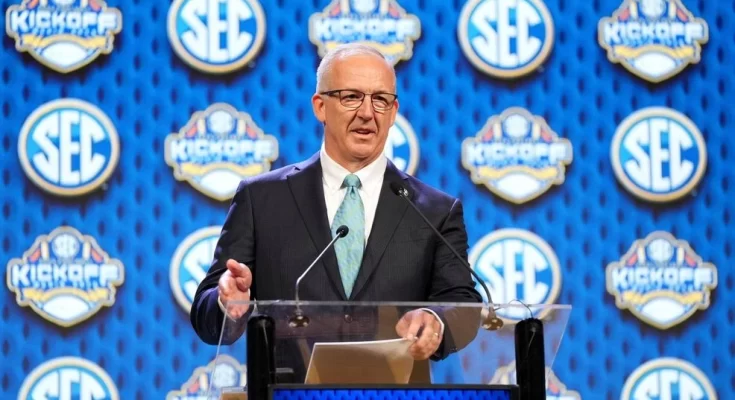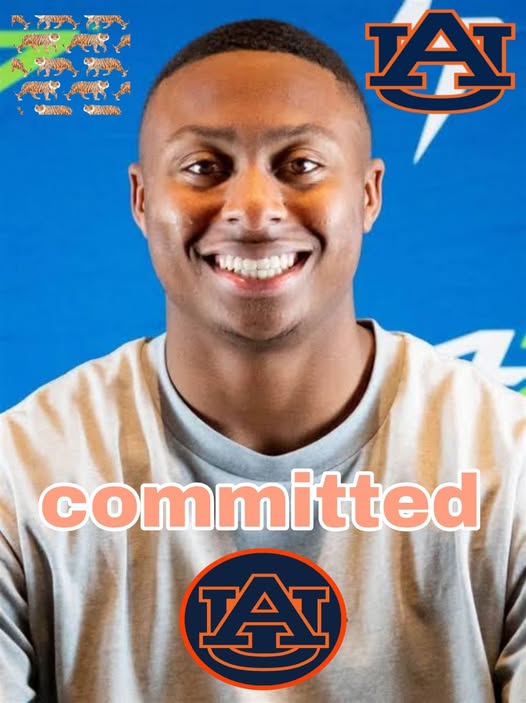Southeastern Conference Football Returns to the Spotlight as Media Gears Up with Tough Questions
As the new college football season approaches, Southeastern Conference (SEC) football once again takes center stage, capturing the attention of fans, players, and media alike. The SEC, widely regarded as one of the most competitive and high-profile conferences in the sport, never stays far from the spotlight for long. Today marks the return of intense media scrutiny and anticipation as reporters, analysts, and commentators prepare to ask the tough, probing questions that have become a hallmark of the conference’s storied history. This renewed focus is not just about the games themselves—it’s about the narratives, controversies, coaching changes, recruiting battles, and championship aspirations that define what makes SEC football so compelling.
The energy around SEC football is palpable. Every year, as preseason events and media days roll around, the excitement builds alongside expectations. The conference boasts powerhouse programs with passionate fan bases, legendary coaches, and a tradition of producing NFL talent that few others can match. From Alabama’s perennial dominance to the rising challenges posed by programs like Georgia, LSU, and Florida, each team brings its own story, its own goals, and its own pressures. With so much at stake, the questions from the media are rarely simple or surface-level. Instead, they dig deep into team dynamics, player readiness, strategic adjustments, and off-field issues that could influence the season.
One of the primary reasons SEC football remains a focal point of national attention is the conference’s track record of success on the biggest stages. Over the past two decades, SEC teams have consistently competed for and won national championships, setting a standard of excellence that others strive to emulate. This success naturally leads to heightened scrutiny—every decision made by coaches and players is analyzed, every win celebrated, and every loss dissected. Media members understand that within the SEC, nothing is taken lightly. Expectations are sky-high, and the pressure to perform can be overwhelming.
With this backdrop, the role of the media during these events is crucial. Journalists and broadcasters are tasked with not only covering the games but also holding programs accountable and providing fans with insight into what’s happening behind the scenes. Their questions often focus on key issues such as how teams are managing injuries, what impact new recruits and transfers might have, and how coaching changes are affecting team chemistry. They probe coaches on strategy, player development, and how they plan to overcome challenges. For players, media days and press conferences offer a platform to demonstrate leadership, articulate goals, and manage expectations.
This year, the questions are expected to be as heavy as ever, reflecting the evolving landscape of college football. Topics like NIL (Name, Image, and Likeness) rights, transfer portal activity, and the mental health of athletes are increasingly part of the conversation. Media members will likely ask how SEC programs are adapting to these changes, how they balance the demands of competition with the wellbeing of players, and what steps are being taken to maintain team cohesion in a shifting environment. These are complex issues that require thoughtful responses, and coaches and players alike must be prepared to address them candidly.
In addition to the broader trends, specific storylines will dominate the discussion. Which quarterback battles have emerged during preseason camps? How are teams addressing defensive weaknesses exposed last season? What adjustments are coaches making in response to rule changes or new offensive innovations? Fans will want to hear about these tactical details, and media members will press for answers that go beyond clichés and vague platitudes. The depth and quality of the responses can influence perceptions and set the tone for the weeks ahead.
The pressure is particularly intense for programs with new head coaches or those coming off disappointing seasons. For these teams, SEC media days represent a chance to reset the narrative, instill confidence, and show progress. Coaches will be expected to lay out their vision clearly and convincingly, outlining how they plan to elevate their squads in a conference known for its ruthlessness. Players, meanwhile, must demonstrate maturity and readiness to step into larger roles, helping their teams navigate the long, grueling season.
Furthermore, the intense rivalries within the SEC add another layer of intrigue. Whether it’s Alabama versus LSU, Georgia versus Florida, or any number of historic matchups, rivalries fuel passionate debates and heightened emotions. Media members often ask about these rivalries to stoke the flames, looking for quotes that hint at motivations or tensions. Coaches and players frequently have to balance respect for their opponents with the competitive edge necessary to win. These exchanges can become defining moments, revealing character and adding drama to the season.
Off the field, the SEC continues to grapple with broader societal and institutional challenges that impact college sports. Discussions around diversity and inclusion, athlete compensation, academic standards, and community engagement are increasingly prominent. Media inquiries into how programs are addressing these issues reflect the broader role that college athletics plays in society. Coaches and athletic directors are pressed to demonstrate leadership not just in winning games but in fostering environments that promote fairness, respect, and opportunity.
As this season approaches, fans and analysts alike will be watching closely to see how the SEC responds to these multifaceted challenges. The conference’s ability to maintain its position at the pinnacle of college football depends on more than talent and tactics—it requires adaptability, transparency, and a commitment to integrity. The media’s role in questioning and highlighting these dimensions ensures that the spotlight on the SEC is both bright and balanced.
In conclusion, Southeastern Conference football’s return to the spotlight is more than just a seasonal ritual; it is a vivid reminder of the high stakes, intense competition, and rich narratives that define the sport. As media members prepare to ask heavy questions, the responses from coaches, players, and administrators will shape the storylines for the months to come. Whether addressing tactical decisions, player welfare, or cultural shifts, these conversations deepen our understanding of what makes SEC football such a captivating and dynamic force in college athletics. The season ahead promises drama, excitement, and relentless pursuit of excellence—hallmarks of a conference that truly never strays far from the center of the college football world.



